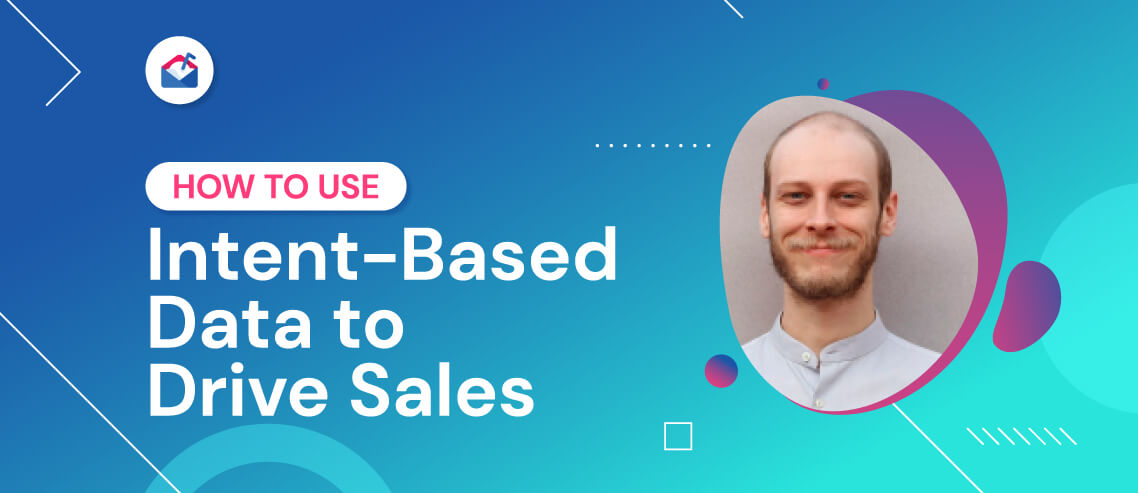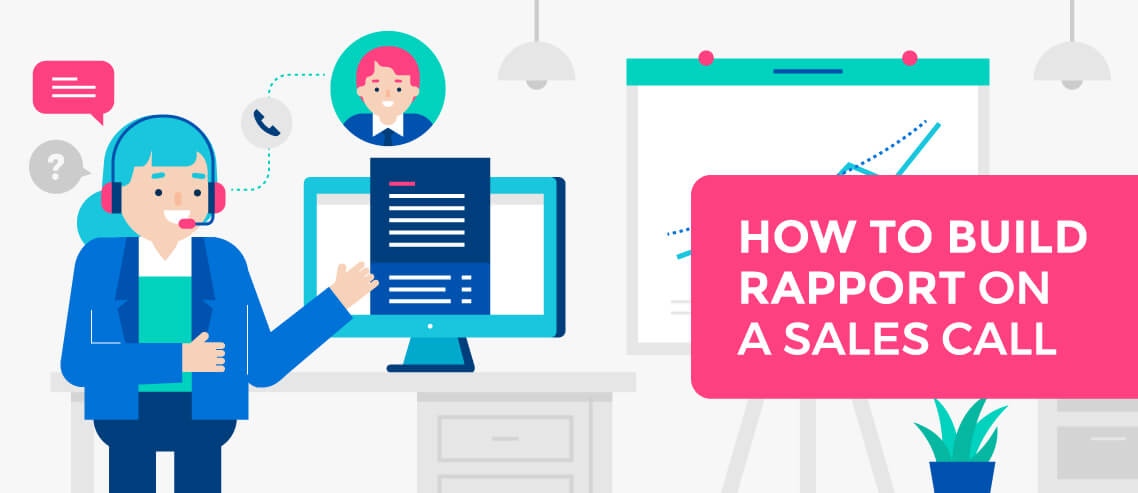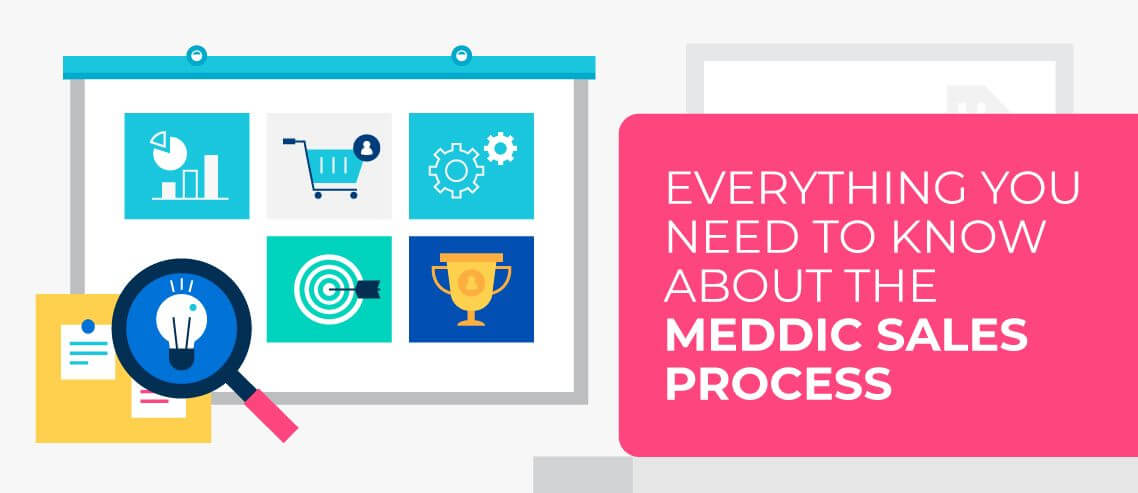How to Use Intent Data to Drive Sales

Contents
The marketing & sales world has changed a lot since 2020.
With Apple’s recent iOS15 updates and LinkedIn’s Connection Request Limits, what was once a “numbers game” is now becoming a highly targeted, low quantity activity that requires more precision than ever before.
Though it’s not ideal for most marketers and sales professionals, it’s fantastic for truly great marketers and top performing sales professionals — because they know about a thing called intent data.
Let’s start by going over the common issues we’re seeing with sales professionals. Then we’ll dive into how intent data can lower cost per acquisition and be a vital tool in building sustainable sales pipelines.
Common Sales Prospecting Mistakes
When SDRs, BDRs, and sales reps prospect for new leads, it’s rarely a smooth path.
There are tons of little issues that can turn into expensive mistakes if not handled properly and quickly.
Great lead generators can speed up deal cycles by focusing on targeted prospects at the bottom of the funnel.
These prospects are aware they have a problem, and are actively looking for a solution.
Our goal with this article is to help you avoid these pitfalls and prospect more effectively by targeting these bottom of the funnel prospects.
Here are some of the most common mistakes that can cost a ton of money and time.
1. Spam Outreach Approach
This can tank results fast.
Spam, aka sending generalized, mass messages to an untargeted list of people does not work, yet we still see sales reps and agencies making this mistake every day.
Cold outreach, sales prospecting, and content creation should be focused on a specific ideal customer profile (ICP) and tailored to each smaller segment.
Taking the time to know your market and personalize your messages can be the difference between a strong return on investment and losing time and money.
2. Lack of Pain-Solution Alignment
For cold outreach and outbound lead generation strategies to work, they need to target specific pain points for the individuals that make up your ICP.
No pain means your prospects have no motivation to solve the problem your product or service solves.
Finding a pain point is best done through in-depth research and interviews with your ideal customer, a step that many sales pros and entrepreneurs alike miss completely.
Taking the extra steps to really know your customers’ pain points will make all the difference.
3. Unqualified Leads
Trying to run cold outreach to top of the funnel leads means long, drawn out deal cycles and endless back and forth.
They haven’t shown any interest in what you’re offering and you have no signals that would indicate that the prospect would even be a good customer!
Isn’t it better to reach out to prospects when they’re researching or have interest in what you’re offering?
Going after qualified and in-market prospects will immediately increase the effectiveness of your outbound campaigns.
What is Intent Data?
This brings us to intent data.
Intent data is contact data of prospects that match your ideal customer profile (ICP) criteria and have shown signals that indicate they are in-market (or at least qualified) for your products or services.
There are several kinds of intent data, from more basic data to data that indicates a prospect is at the bottom of the funnel.
Basic Intent Data
This kind of intent data generally involves more publicly available information about your prospect that shows some kind of qualification for your offer.
This can include:
- Revenue growth
- Recent funding
- Hiring for specific job positions
- Technologies and apps they’re using
- Senior management changes
- And many more
You can see this isn’t proof that your prospect is 100% in the market for your offer, but it shows signals that they are more likely to be in-market, or at least interested in the competitive advantage you’re offering.
Basic intent data can be filtered for on several databases like LinkedIn Sales Navigator.
In-Market Intent Data
We are still in the early stages of the internet in many ways, it can still feel like the wild west when it comes to privacy and data collection.
In-market intent data is data that has been collected by various display ads services, softwares, browser extensions, and more that track a user’s journey on the internet.
The purpose of tracking this journey is to determine if the user is researching or has intent to buy a certain product or service.
This data can be collected and delivered via 1st or 3rd party sources:
Anonymous 1st Party Behavioral
People visiting your website who are identified by their IP address, which is then mapped to their company’s name. You can use this data to personalize the messaging on your website or outreach to them, knowing they’re doing their research.
Known 1st Party Behavioral
People visiting your website who have filled out a form, registered for a webinar, or requested a demo. They are “known” because they have provided their information. This is by far the most valuable data to identify if a prospect is at the bottom of the funnel, ready to learn more and engage on a sales call.
Anonymous 3rd Party Behavioral
People visiting other websites that you don’t own, but indicate some relevance (e.g. specific articles on Forbes or other authority business websites). They are identified and their contact data is sold by intent data vendors.
Known 3rd Party Behavioral
People visiting other websites who have also filled out a form on that site providing their contact information. In this context, they become known to the website owner, and vendors sell that information to marketers.
So, as you can see, this can be very powerful data to use in your outbound campaigns, and across your entire marketing campaigns as well.
By using this data to target the bottom of the funnel, you build qualified pipeline who are actually in-market to buy, while your top and middle of the funnel activities continue to bring in new leads that need more nurturing.
How to Get Intent Data
There are many ways to get intent data, depending on the type of data you need and your revenue goals.
Going after basic intent data isn’t that difficult and can be done with any of the most popular lead generation tools on the market, including LinkedIn Sales Navigator.
How to Get Basic Intent Data with LinkedIn Sales Navigator
- Go to LinkedIn Sales Navigator’s “Account Filters”
- Look for buyer intent triggers like Technology Used, Company Growth, Department Growth, etc.
- Once you have your list, use the filters at the top of the screen to find companies with Recent Funding or who have had Senior Leadership Changes
- Select all of the companies and click “View Employees”
- Now use the Lead Filters to filter down to exactly the roles and individuals you need to speak with in those companies
Now you have a list of prospects that are showing buying signals aligned with your product or service, and you can send relevant messages to gauge their interest.
How to Identify Website Visitors
This is a strategy that works very well, especially in conjunction with good top and middle of the funnel marketing.
By identifying website visitors, specifically visitors that have visited multiple times or have visited specific key pages (such as your pricing page or an important blog post), you can capture that demand and reach out in that moment of their research.
A quick Google search will give you several “identity resolution” and “visitor identification” softwares that you can implement right away.
How to Get In-Market Intent Data
There are several vendors for in-market intent data on the market today.
Selecting one to work with will depend on your budget and the industries you’re targeting.
Again, a quick Google search will reveal many “in-market data” and “buyer intent data” providers that can sell this data with varying pricing and unique features.
Do some research and look for intent data providers that provide current, relevant data at a price you can afford.
Using Intent Data to Drive Sales
Once you have your contact data with buying intent signals, it’s time to put it to good use.
1. Engage Leads with Personalized Emails & Messages
Generally, cold emails and LinkedIn connection requests are very “cold”. The prospects haven’t shown any interest in what you have to offer and you’re contacting them out of the blue.
Intent data improves your cold outreach and makes it a lot “warmer”.
You already know that these prospects are using technology similar to yours, having to prove themselves in a new position in the company, or have actually been researching your product or service.
Some of the advantages of using intent data in your outreach:
- Shorter deal cycles
- Better quality leads
- Easier to craft relevant messages
- Easier to know the type of content to nurture them with
- Opens up bandwidth for more top and middle of the funnel activities
By segmenting your lists based on the level of intent, your outreach will be more relevant and more effective than ever before.
We recommend a multi-channel approach using cold email and LinkedIn to get in touch with your prospects at the right time on the right channel.
2. Targeted Advertising with Custom Audiences
The trajectory that Apple and other large tech companies are showing towards privacy (as shown with their iOS 15 update), is disrupting the online advertising space.
There are more data gaps than before, and ad platform targeting is getting less effective and more expensive.
With intent data, you can take away the guesswork for the ads platform and give them a highly relevant, in-market dataset to start delivering ads to. Then, you can use lookalike audiences to expand the audience beyond your initial dataset to scale up your ad delivery.
By doing this you lower costs, increase efficiency, and get better results from your online advertising. You also own that data, so you can combine ads with other channels, like cold outreach on email & LinkedIn, for maximum impact.
3. Personalize Your Website Experience
Intent data can be used to personalize the experience of your website or landing pages so they’re tailored to the type of audience that’s visiting.
This is extremely powerful.
An example would be if an IP address is identified to belong to a 100+ employee company, you may want to change your call-to-action (CTA) to something like “speak to our sales team”, rather than “sign up now”.
You know they’re a big company, so it’s more than likely they’ll have more than one user to onboard and you’re accommodating that from the first second they interact with your website.
Using intent data to personalize your website can increase conversions, but more importantly it can tailor the experience to the type of customer you’re talking to which makes a great first impression and can lead to a shorter deal cycle.
There are many ways to personalize your website experience, so do your research and test, test, test!
Conclusion
Driving sales using intent data is a big part of the future of marketing and sales, and something that many are overlooking.
If you can harness the power of intent data, you can zoom past your competitors, fill the bottom of the funnel with “ready to buy” leads, and grow your business consistently and quickly.





